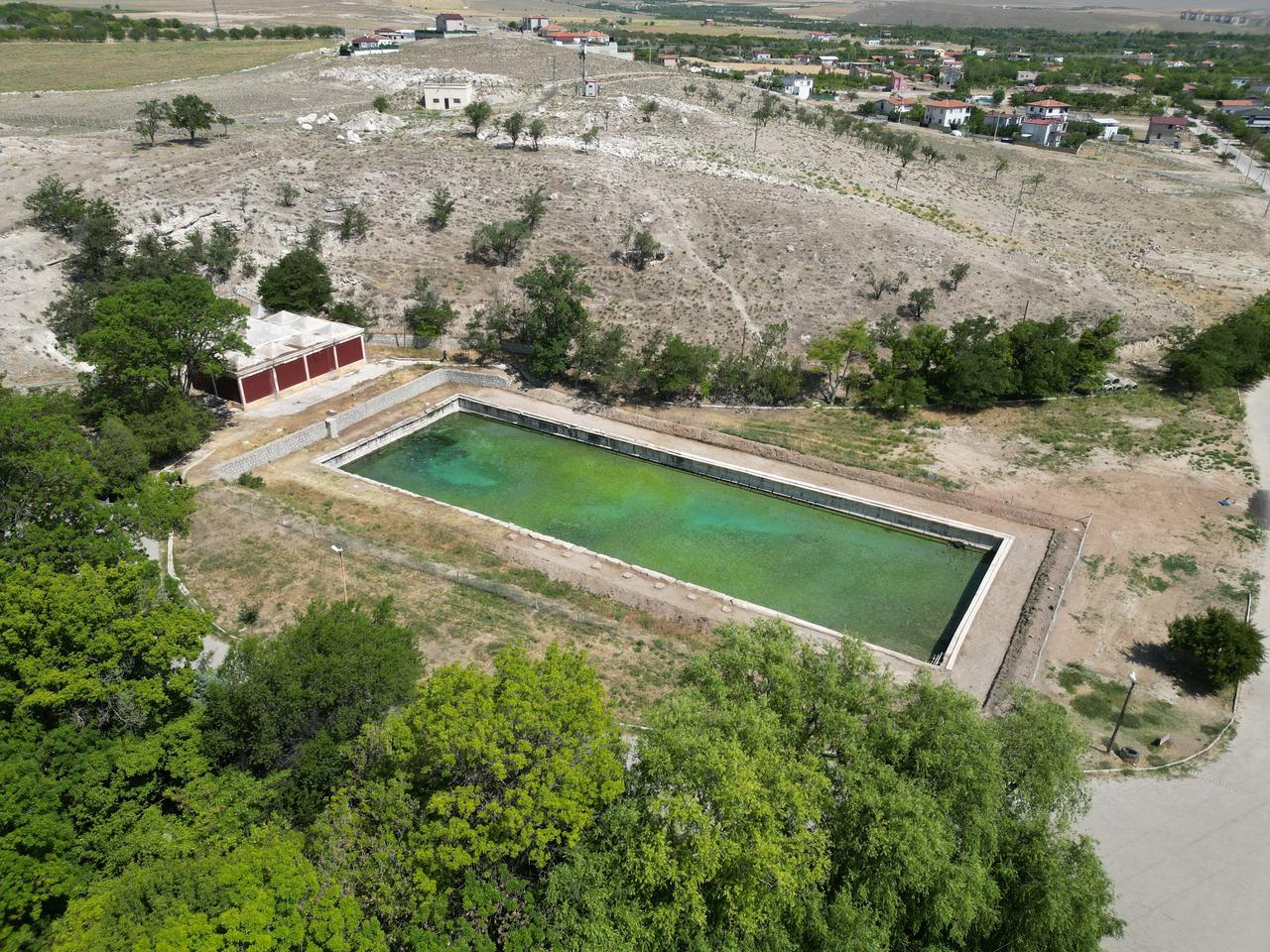
Excavations have resumed at the ancient Roman Pool in Bahceli, near the ancient city located in Nigde's Bor district, nearly eight decades after the first archaeological investigation.
As part of the Turkish Ministry of Culture and Tourism’s Heritage for the Future initiative, a team led by Professor Osman Doganay is uncovering one of the best-preserved Roman water structures in Türkiye.
Dating back to the second century A.D. during the reigns of emperors Hadrian and Trajan, the Bahceli Roman Pool was more than just a reservoir—it formed a critical part of an advanced water distribution system that served the ancient city of Tyana.

“The Roman Pool collected spring water from the Bolkar and Aladag mountains,” explains Prof. Doganay. “This water was carried via underground channels extending nearly 3,000 meters (9,842.5 feet), and, in the final 1,800–2,000 meters, it was raised onto aqueducts to reach Tyana.”
This extensive hydraulic system once provided clean drinking water to an estimated population of 35,000.
Doganay highlights that the pool, with its impressive 21 by 62-meter dimensions and a depth of up to 2.5 meters, was likely covered in antiquity to maintain the purity of the drinking water.
The structure not only reflects Roman engineering excellence but also served as a lifeline for an entire urban settlement in central Anatolia.

Although the area remained a swamp until 1946, it was partially revealed by the then Waterworks Department. Now, the renewed archaeological work aims to explore not just the pool itself but the broader architectural landscape surrounding it.
“Initial findings indicate that there may have been additional structures, possibly porticoes or annexes, integrated with or adjacent to the pool,” Doganay noted.
“As excavations progress, we hope to determine whether these belonged to the same hydraulic complex or served other functions.”
One standout feature is that the Bahceli Roman Pool is the only known ancient pool in the region built to what today are considered Olympic dimensions. These characteristics make it a unique monument in the context of Roman Anatolia.

Adjacent to the excavation site lies Kosk Hoyuk (Kosk Mound), one of central Anatolia’s prominent Chalcolithic-era settlements. The plan is to integrate both sites into a single, visitor-friendly heritage park.
“We aim to develop a holistic landscape plan that showcases the area's archaeological layers—from prehistory to Roman times—in a unified experience,” Doganay stated.
Currently attracting around 200,000 visitors annually, the site is projected to host up to 1 million tourists per year after the new developments.